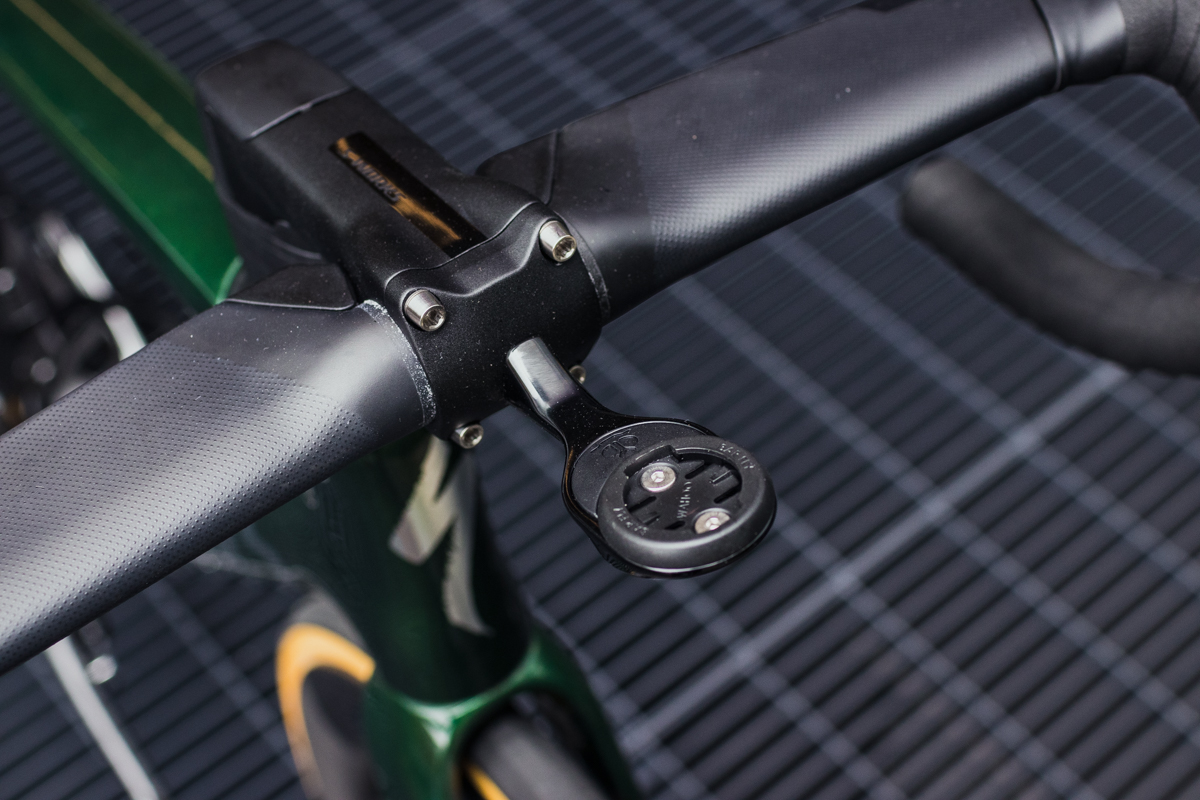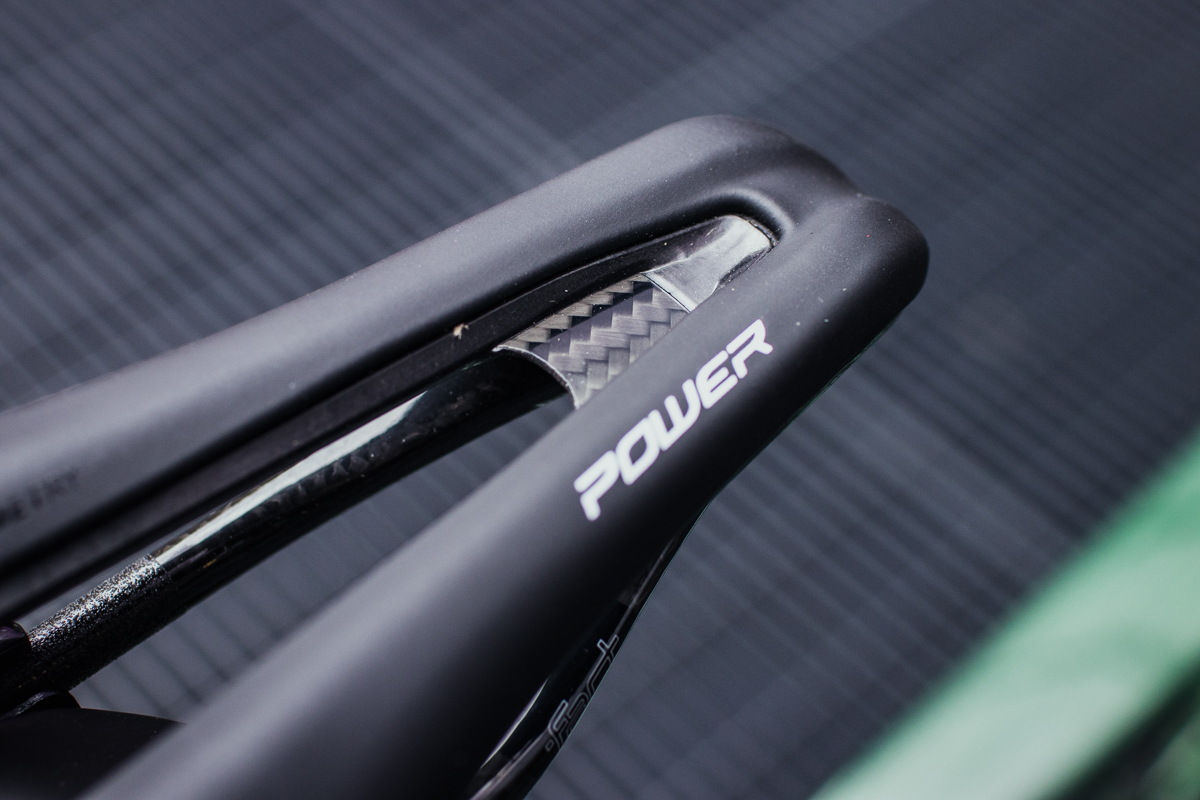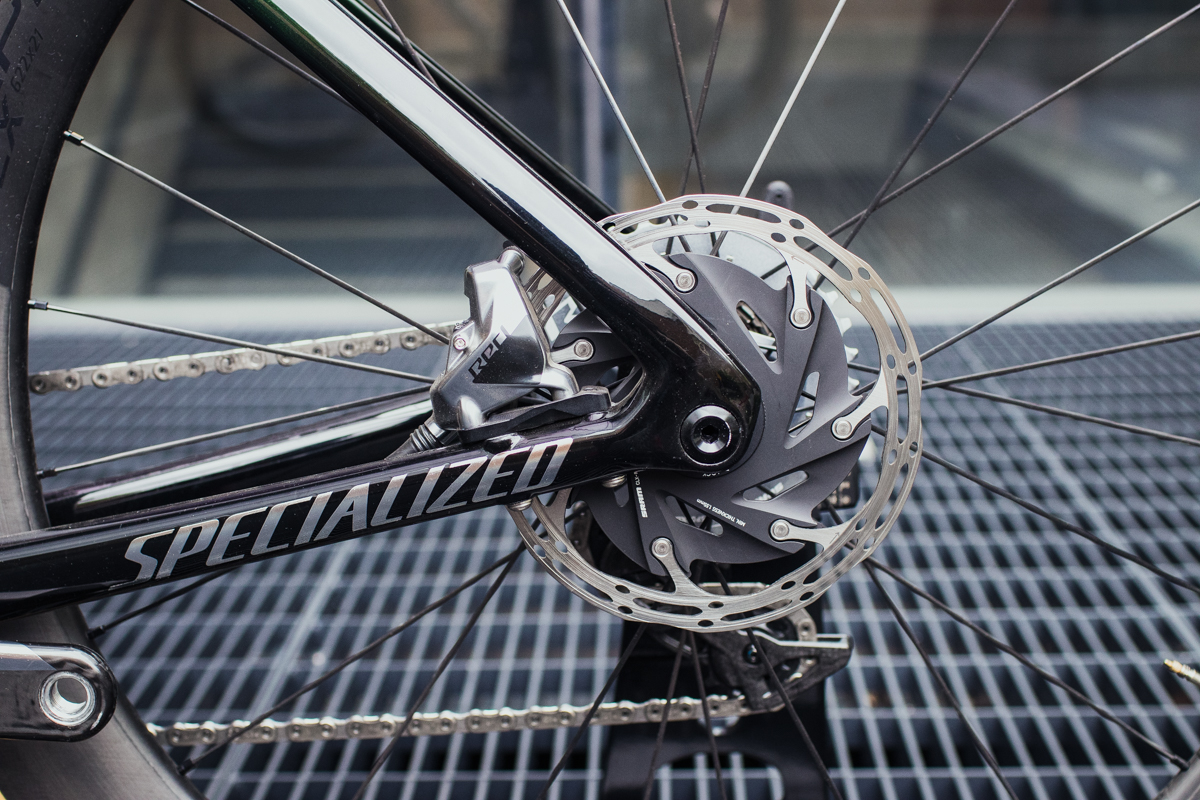The new 2021 Specialized S-Works Tarmac SL7 is out for (re)Venge
The pro road machine gets more aerodynamic and a big vote of confidence

With the new Specialized S-Works Tarmac SL7, the bike company is telling you that you can have it all, roadie. In a riff on Keith Bontrager’s quip—”Strong, light, cheap: pick two.”—Specialized says, “Aero, stiff, light: pick three.” That line made me raise an eyebrow. But it was what a Specialized product manager said about another one of the company’s bikes that made me raise both eyebrows.
But first, look closely at Keith Bontrager’s line. It clicks because it not only makes sense from an engineering and economics perspective, but really, how we understand the way the world works. Take training, for example. As you work on your endurance, your top-end power will dwindle. If you want to build your explosivity, your base work will have to wait. You can’t have it all. The best you can do is strive for balance, ideally, at the right time and place. You always pay a price, somewhere.
Yet, Specialized is pretty confident about the new S-Works Tarmac SL7’s all-round abilities. So, if the aerodynamics are so dialed on the new Tarmac, what’s the role of Specialized’s aero road bike, the Venge, in the company’s lineup? I asked that question of Cameron Piper, who is the product manager on the Tarmac. His answer was heavy on diplomacy. “We believe in the performance of the new Tarmac SL7. It’s a bike that has no compromises for our riders,” Piper said. “All our professional riders will race the Tarmac SL7 moving forward. The Venge itself—the idea is still there within our brand, but the platform for this upcoming model year will only exist as a frameset for markets that do take that in. But it will not be a complete bike model.”
In short, Specialized is so sure of the Tarmac that it’s telling Peter Sagan and all the riders of Bora–Hansgrohe, as well as Julian Alaphilippe and the riders of Deceuninck–Quick-Step that the Tarmac SL7 is the one bike they need on race day. (Well, except for the Roubaix at the Cobbled Classics.)
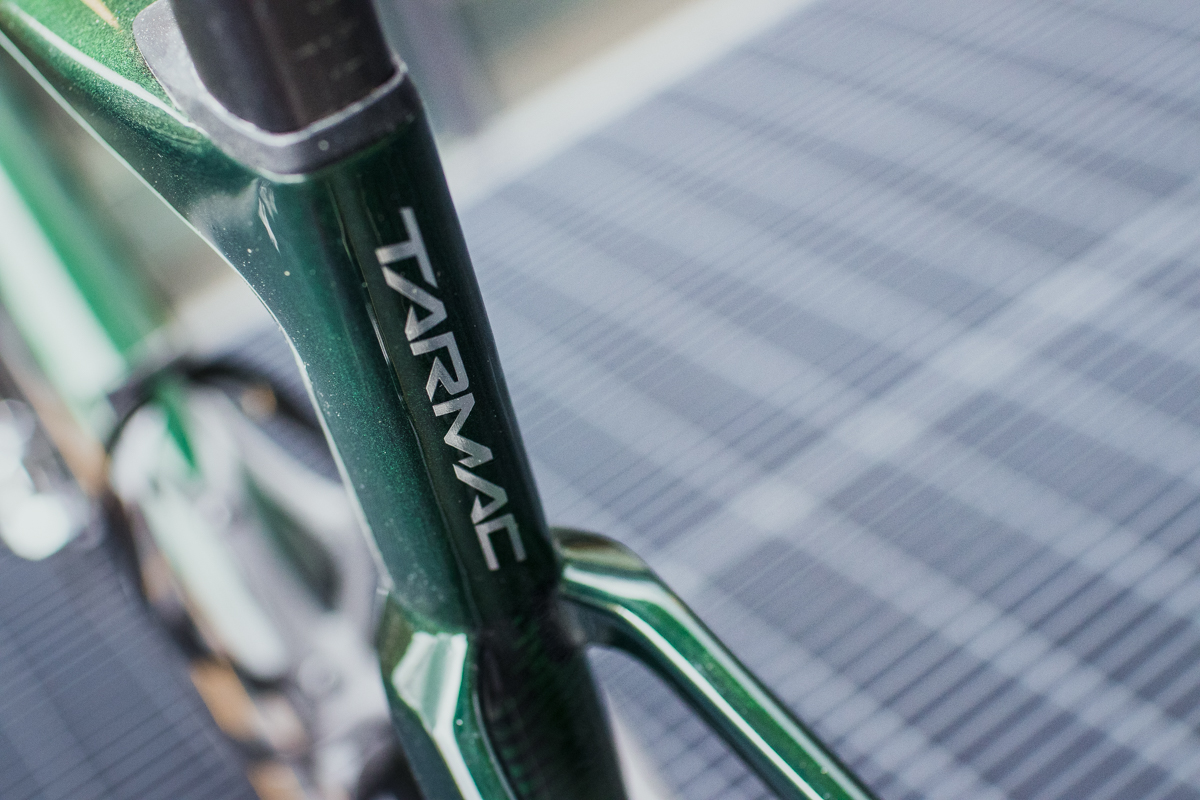
The ‘aero-ification’ of the climber’s bike
The trend with climber’s or Grand Tour race bikes this year is the addition of aerodynamics. You saw in May with the Canadian launch of the new Giant TCR and again in June with the launch of Trek’s new Émonda. Specialized had already been ‘aero-ifying’ its Tarmac a few years ago. The tube shapes on the SL6, Specialized said, made you “approximately 45 seconds faster over 40 km.” With the Tarmac SL7, the company says it’s made the same improvement once again: the frame is 45 seconds faster throughout 40 km compared with the Tarmac SL6. “The new Tarmac is now faster than the Venge Vias,” says Piper, referring to the aero-to-the-max road frame that came out in 2015, “while still more than 1 kg lighter.”
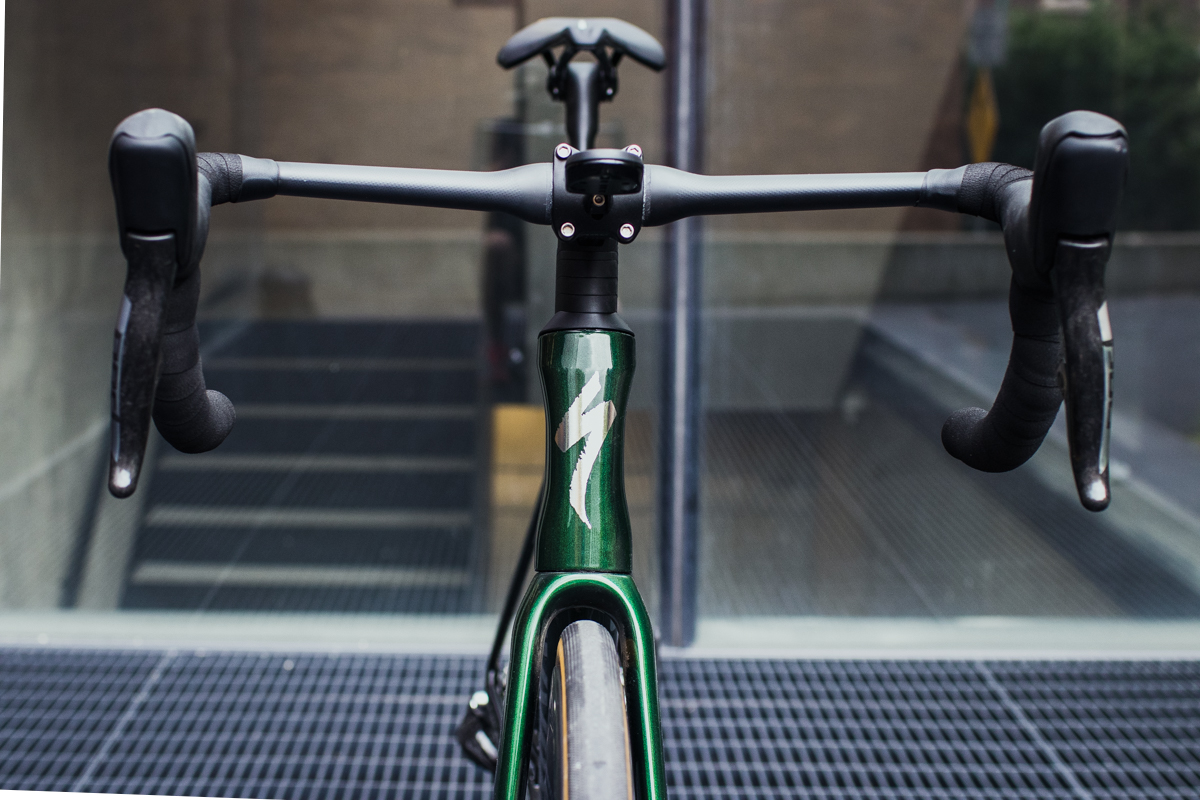
It’s still really light
The test model I have with SRAM Red eTap AXS drivetrain, Roval Rapide CLX wheels, S-Works Power saddle, integrated computer mount and even two S-Works Carbon Rib Cage III bottle cages (and no pedals) tipped my scale to 7.07 kg. Piper says the Shimano Dura-Ace Di2 model is 6.7 kg out of the box. A size 56 frame is 800 g. To keep the bike light, the company reduced wall thickness on the tubes where it could as well as surface area, deploying its carbon-fibre formula, dubbed FACT 12r, judiciously. Because the frame is so light, and makes it easy to build a complete bike that hovers around the UCI minimum of 6.8 kg, Specialized could afford to add weight in practical aways. The BSA threaded bottom bracket on the SL7 should do a good job of keeping the BB silent much better than the BB on the SL6.

Addressing integration inconvenience
When Specialized came out with the Venge Vias, with its rear caliper brakes affixed at the midpoint of the seat tube, it made a bike that was not for the average home mechanic. But Specialized isn’t alone in making their complete bikes so, er, specialized. For example, there are a few brands that require you to use their stem and bars on their frames. With the Tarmac SL7, Specialized gives you some user-friendly features, as well as component options. The bar is the Aerofly II, which comes from the Venge. On my test bike, the hydraulic brake hoses sneak out the bar (remember, there are no shifter cables with the wireless SRAM gruppo), run beneath the S-Works Tarmac stem and into the uppermost spacer. It’s sharp and clean. You can, however, run any handlebar with a 31.8-mm diameter, but the look might not be as clean.

Each spacer is made of two pieces that lock and unlock together, so you can remove or add them without having to re-cable. If you want to have some extra length to the steering tube that would sit proud of the stem, you can. You’d need to use the stem cover that allows the steering tube to pass through. Then it’s a matter using traditional round spacers to account for the extra length. This is a nice option to have if your fit needs change throughout the season and off-season. (Note, the stem cover in the photos does not allow for tube pass-through.) There are also three headset covers. One works with the Tarmac stem and its aero spacers. Another works with the Tarmac stem for mechanical routing. The third is a universal cover that lets you run round spacers and a traditional stem. The choice is yours.

Same geometry, better compliance and stiffness
“We wanted to marry the Venge’s stiffness with the SL6’s compliance and responsiveness,” Piper says. The fit of the Tarmac stays the same on the new SL7. You’ll notice, however, that the stack and reach numbers are the same as the Venge. Specialized measured the stack and reach to the centre of the head tube, as you do. The head-tube top is recessed so it sits below the top tube. Once you put on the headset cover, the fit numbers end up being the same among the SL7, the old SL6 and Venge.
Specialized offers one bike for all genders. There are good reasons for gendered bikes, as well as good reasons for non-gendered bikes. In the latter camp, Specialized notes that there is more physical variation across genders than within them, so the fit throughout the Tarmac sizes—44 cm to 61 cm—should cover all riders.


If you want power (meters), you got it
Top-end Tarmac SL7 models come with power meters. On SRAM models, you find the rock-solid Quarq power meter. On Shimano builds, you won’t see the Japan-based company’s power meters. Instead, it’s a set of sensors from Canadian company 4iiii. Specialized has been running the 4iiii pods for a few years and is continuing with that brand. The metrics gained from the 4iiii power meter are integrated with the Specialized Power Cranks app, as well as its Ride app.
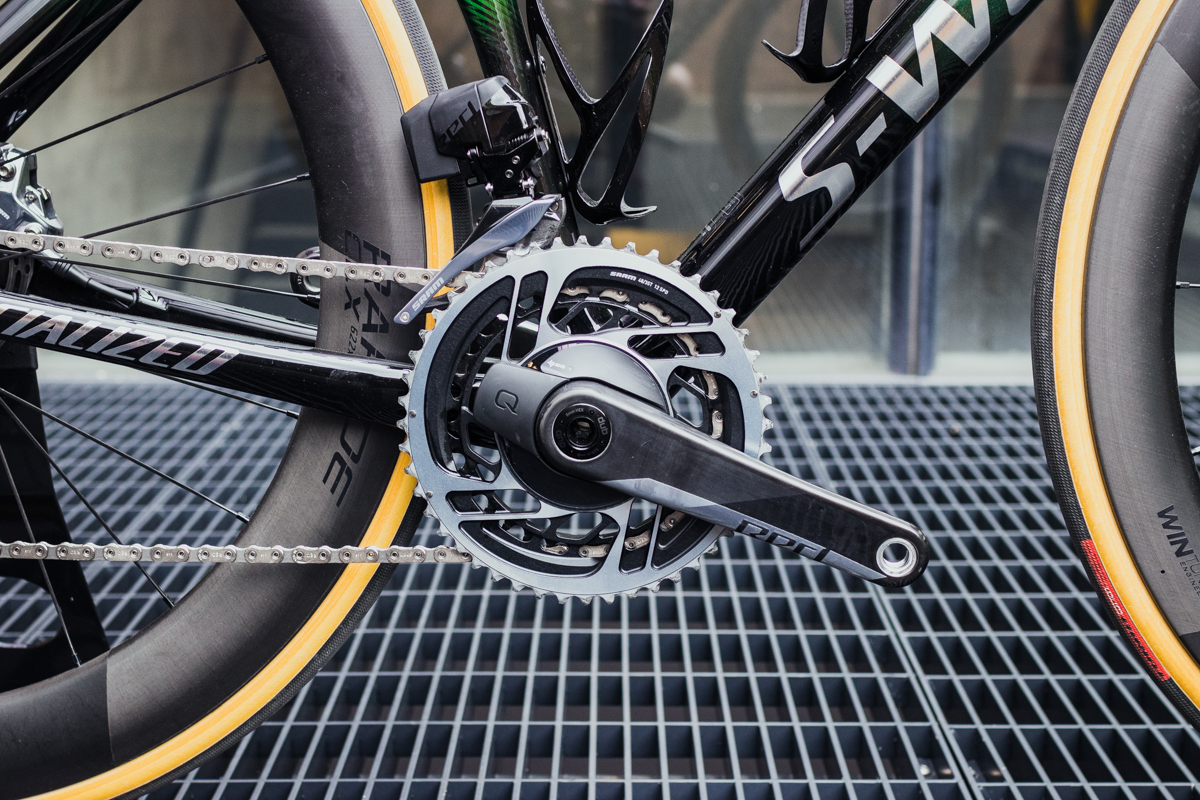
Wheels and tire clearance
New components of note on the Tarmac SL7 are the Roval Rapide CLX wheels. In keeping with the story of the frame, the house-brand hoops are lightweight and aerodynamic. Specialized says the front and rear CLX wheels have different rim shapes so that together then handle better in corners and crosswinds. I get a measurement of a 50-mm rim depth on the front and 60-mm depth at the rear. The company says the CLX set has less drag than most 65-mm wheelsets and is 25 per cent more stable when hit with gusts compared with the CLX 50. The come with 26c Specialized Turbo Cotton tires. The frame has clearance for treads as wide as 32c.


Canadian prices and availability
| Model | Groupset | Price |
|---|---|---|
| S-Works Tarmac SL7 | Shimano Dura-Ace Di2 | $14,999 |
| S-Works Tarmac SL7 | SRAM Red eTap AXS | $14,999 |
| Tarmac SL7 Pro | SRAM Force eTap AXS 1x | $9,499 |
| Tarmac SL7 Expert | Shimano Ultegra Di2 | $6,999 |
| S-Works Tarmac SL7 | frameset | $5,999 |
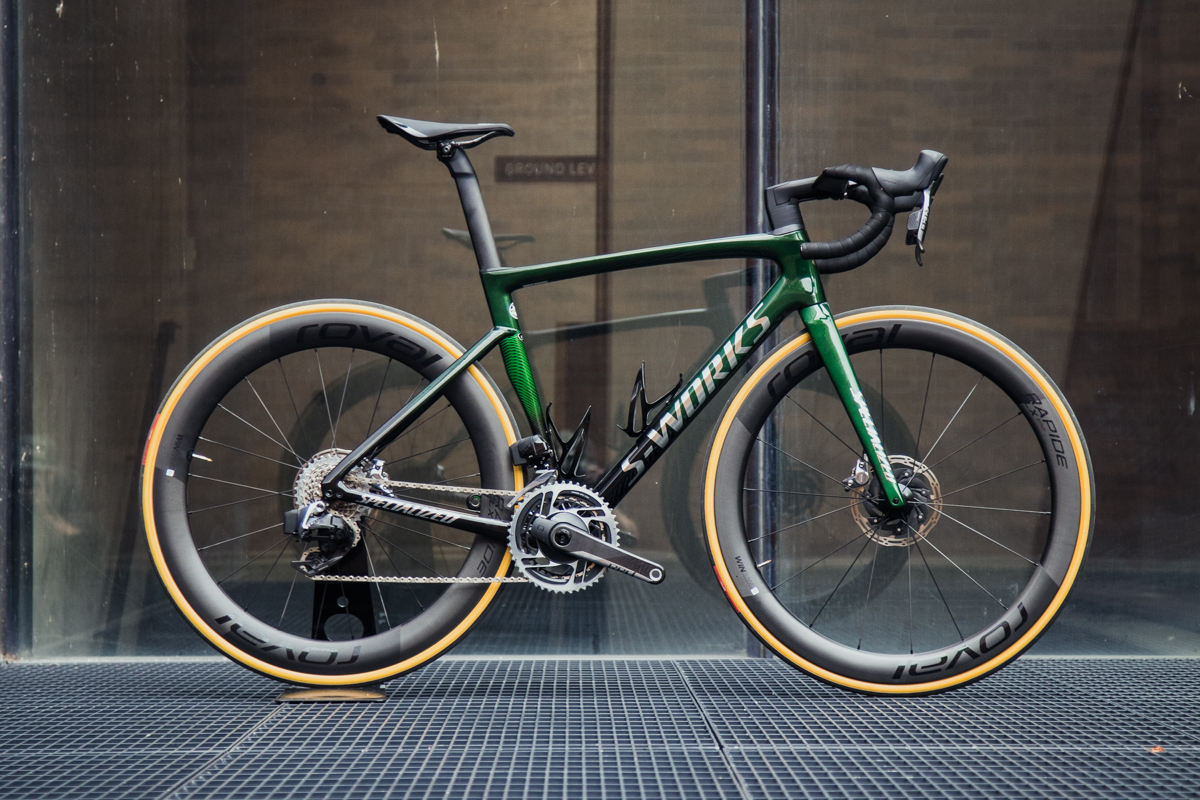
Specialized S-Works Tarmac SL7 first impressions
I’ve taken the Tarmac SL7 on a few rides. It just zooms across familiar roads. The smooth, effortless power transfer managed by the frame and seemingly frictionless rolling of the CLX wheels make for a stunning package and ride experience. The colour, a kind of British racing green, is hot. It actually sparkles in the light.
The steering is sharp when it comes time to switch into a corner. The bike has good, but not exceptional, straight-line stability. Don’t get me wrong: I’m not looking for the planted-feel of an all-road bike, but there are a few other high-end racers that track slightly better with less of your input.
Also on the topic of required rider input, I found steering from the hoods to be noticeably more work than from the drops of the Aerofly II handlebar. The levers’ default positions seem to demand a disproportionate reach. When I was out of the saddle and my hands were on the hoods, I felt too tall, too perched, until I did some tinkering. The flat. aero bar tops don’t seem really designed for, well, hands. The drops though. That’s the place to be with the Aerofly II bar. Then you’re put in a nice little speed pocket.
These quibbles aside, the Tarmac SL7 is a spectacular bike. There’s something about it that makes you want to just give’er.
